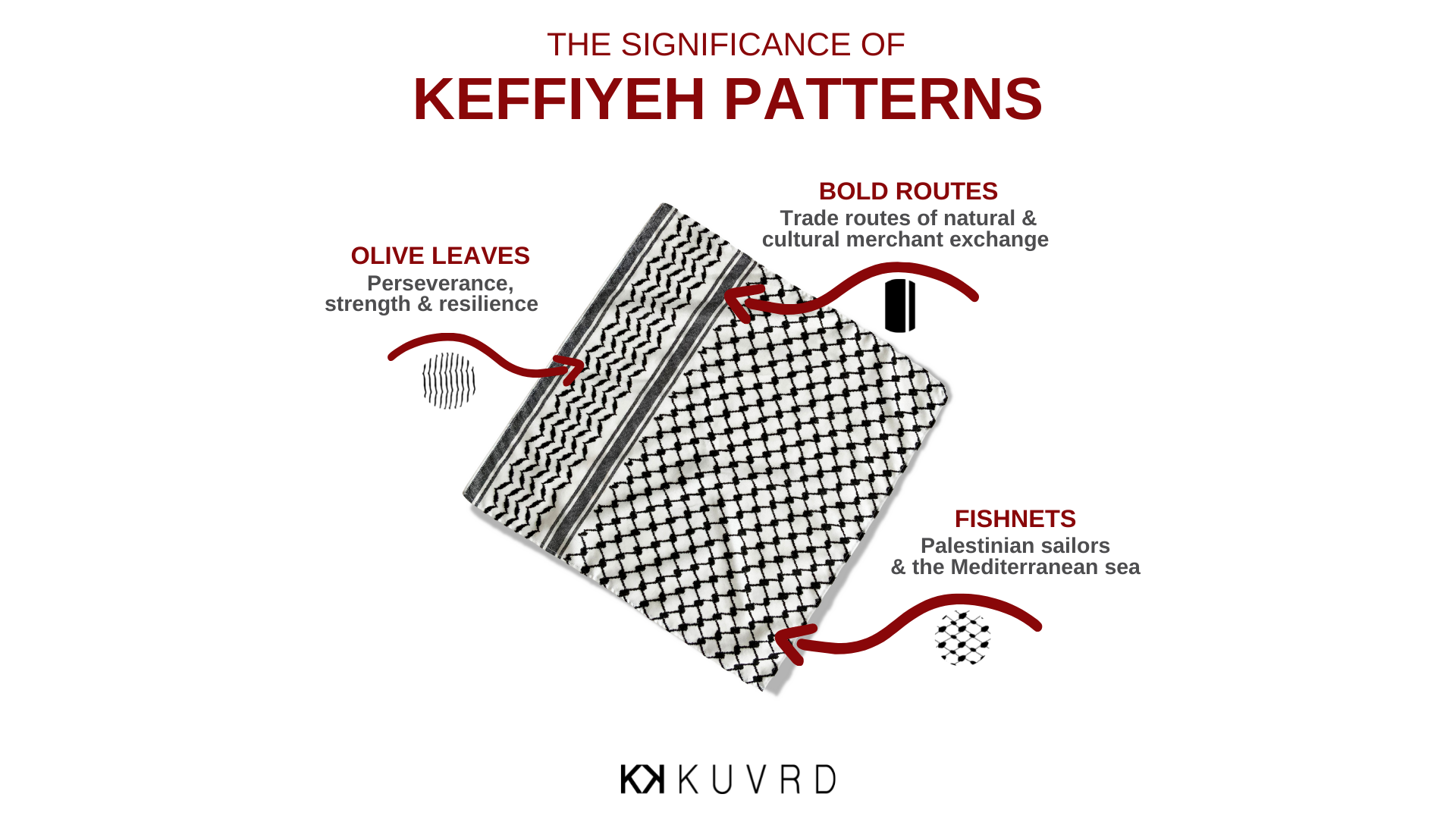Delving into the world of keffiyeh meaning, we uncover a rich tapestry of history, cultural symbolism, and modern fashion interpretations. This versatile headwear has transcended its traditional roots to become a powerful statement of identity and a coveted fashion accessory.
From its humble beginnings as a protective head covering in the Middle East to its iconic status as a symbol of resistance and solidarity, the keffiyeh has evolved into a multifaceted cultural artifact.
Keffiyeh History and Origins: Keffiyeh Meaning
The keffiyeh, a traditional Arab headdress, holds significant historical and cultural importance. Originating in the Arabian Peninsula, it has been worn by nomadic tribes and city dwellers alike for centuries.
The keffiyeh is typically made of cotton or wool, and its production involves intricate craftsmanship. The fabric is woven on a loom, and the patterns and colors vary depending on the region and cultural traditions.
Keffiyeh, a traditional Arab headdress, has gained global recognition in recent years. Its popularity has been further boosted by celebrities like Gigi Hadid and Bradley Cooper, who have been spotted wearing the scarf. Gigi Hadid and Bradley Cooper’s relationship has been the subject of much speculation, but their shared love for the keffiyeh is undeniable.
The scarf has become a symbol of style and cultural appreciation, transcending its traditional roots.
Cultural Significance
In Arab culture, the keffiyeh has long been a symbol of pride, identity, and solidarity. It is often worn by men as a sign of respect and tradition. In recent years, the keffiyeh has gained popularity as a fashion accessory, and it is now worn by people of all ages and cultures around the world.
Cultural Symbolism and Representation
The keffiyeh has transcended its practical origins to become a potent cultural and political symbol, representing identity, resistance, and solidarity.
As a symbol of identity, the keffiyeh embodies the cultural heritage and shared experiences of the people of the Middle East. Its distinctive pattern and intricate designs evoke a sense of belonging and connection to one’s roots.
Political Symbolism, Keffiyeh meaning
The keffiyeh has become synonymous with political resistance and solidarity. Its use as a symbol of defiance against oppression and colonialism has been seen in countless uprisings and revolutions throughout history.
Notable figures associated with the keffiyeh include:
- Yasser Arafat, the former leader of the Palestinian Liberation Organization (PLO)
- Fidel Castro, the former leader of Cuba
- Hugo Chavez, the former president of Venezuela
These individuals have used the keffiyeh to symbolize their commitment to the struggle for justice and liberation.
Modern Interpretations and Fashion

The keffiyeh has evolved beyond its traditional use as a protective head covering into a versatile fashion accessory. Its distinctive patterns and rich cultural heritage have made it a symbol of style and rebellion.
Contemporary designs of the keffiyeh feature a wide range of styles, patterns, and materials. Traditional black-and-white checkered patterns remain popular, but modern versions come in a vibrant array of colors and prints.
Materials
- Cotton: Lightweight and breathable, suitable for warm climates.
- Linen: Durable and wrinkle-resistant, perfect for summer.
- Silk: Luxurious and elegant, ideal for formal occasions.
- Cashmere: Warm and soft, perfect for winter.
Styles
- Traditional: Folded into a triangle and worn over the head, secured with an agal.
- Scarf: Wrapped around the neck or head, creating a stylish and casual look.
- Bandana: Tied around the head or neck, offering a touch of bohemian flair.
- Turban: Folded and wrapped around the head, creating a sophisticated and elegant style.
Incorporation into Modern Fashion
| Item | Description | Image |
|---|---|---|
| Jacket | Keffiyeh-printed jackets add a touch of cultural flair to any outfit. | [Image: Keffiyeh-printed jacket] |
| Dress | Flowing dresses with keffiyeh patterns create a bohemian and feminine look. | [Image: Keffiyeh-patterned dress] |
| Pants | Keffiyeh-printed pants add a touch of edge to casual outfits. | [Image: Keffiyeh-printed pants] |
| Accessories | Scarves, hats, and bags adorned with keffiyeh patterns complete any outfit with a touch of cultural heritage. | [Image: Keffiyeh-printed accessories] |
Final Thoughts
Today, the keffiyeh continues to captivate with its timeless elegance and versatility. Fashion designers have embraced its unique aesthetic, incorporating it into a wide range of styles and collections. Whether as a symbol of cultural heritage or a stylish fashion statement, the keffiyeh remains an enduring icon, connecting the past with the present and inspiring countless individuals worldwide.
General Inquiries
What is the origin of the keffiyeh?
The keffiyeh originated in the Middle East, with its roots traced back to ancient Bedouin tribes who used it as a protective head covering in the harsh desert environment.
What is the cultural significance of the keffiyeh?
The keffiyeh has become a powerful symbol of cultural identity, resistance, and solidarity in many Middle Eastern and Arab cultures. It has been worn by notable figures such as Yasser Arafat and has been adopted as a symbol of various political and social movements.
How has the keffiyeh evolved in modern fashion?
In recent decades, the keffiyeh has gained popularity as a fashion accessory, with designers incorporating it into various styles and collections. It is now seen as a versatile piece that can add a touch of exotic flair to any outfit.